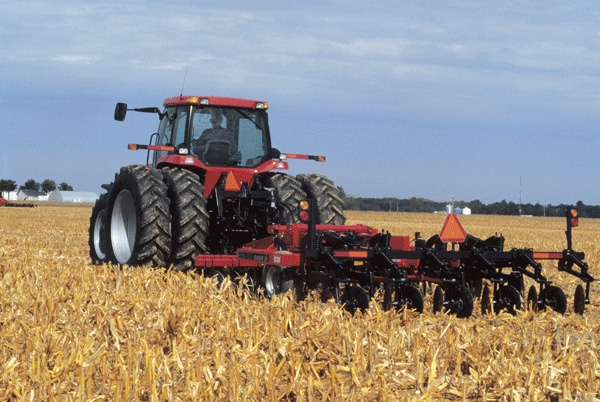May 17, 2011

With diesel fuel prices hovering above $4 per gallon and weather-related planting delays, producers are looking for ways to improve tractor performance and fuel efficiency.
One of the quickest and easiest ways to accomplish this is to inflate radial tires to the lowest recommended pressure for the load they carry.
A survey conducted in Oklahoma found that only 45 percent of the tractor tires were within the recommended tire inflation ranges.
Tire inflation recommendations
Weigh each axle after the tractor has been properly ballasted. If fully mounted equipment will be transported, weigh the rear axle with the equipment in the raised position.
If liquid manure tanks or grain carts will be towed, add the loaded tongue weight of the equipment to the rear axle weight.
Manufacturers can provide this information. Determine the weight carried per tire by dividing the axle weight by the number of tires.
Use load and inflation tables available from the tire manufacturer and inflate tires to the lowest recommended pressure for the weight carried per tire. Adjust inflation pressures whenever axle loads change.
Use high quality gauge
Use a high quality tire gauge that is easy to read, accurate, consistent and graduated in at least one psi increments. Gauges designed for use on ATV tires are recommended. Digital, pencil and dial gauges will all work. However, dial gauges tend to be the most easily damaged when dropped.
Check the inflation pressure often and when the tires are cold, preferably in the morning. Gauge readings can be 1 to 3 psi higher when the tires are warm.
If fluid ballast has been added to the tires, measure inflation pressure with valve stem in the same position for all tires. Pressures at the bottom of the tire can be 1.5 psi higher than at the top.
For optimum performance, set all tires on an axle to the same pressure.
By properly inflating radial tires, you will reduce fuel consumption and finish your field work in less time.
You May Also Like




